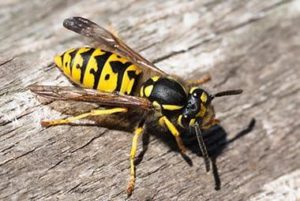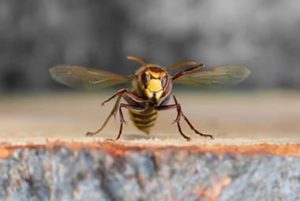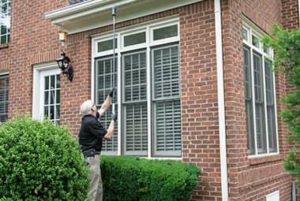In keeping with tradition, it’s time to take a break from our typical timely pest control advice to check out a creepy critter for Halloween (see previous Halloween posts here and there). This post is not for the faint of heart (or stomach), but read on if you want to know more about carnivorous larvae and zombie caterpillars.
There is actually an entire family of wasps with the common name Parasitic Wasps. These creatures can vary widely is size, behavior, and habitat, but they all have one thing in common: They all begin their lives by chewing their way through another creature.
Our parasitic wasps of choice for today are found in the caterpillar wasp family. These wasps find a vulnerable caterpillar minding its own business on a plant somewhere. They then use a hollow, sharpened spine on their back ends to puncture the skin of the caterpillar and lay one or more eggs inside the caterpillar’s body. Over a few days or weeks, the eggs hatch, and wasp larvae emerge. Luckily for them, they are surrounded by a convenient food source! These wasps literally begin to eat their host caterpillar from the inside out. By the time they have consumed enough of their food source to break through to the air, the young wasps are old enough to survive outside the protection of the caterpillar’s body. They can move on, eventually maturing into full- sized wasps that can repeat the procedure all over again. Of course, the caterpillar doesn’t survive to see the wasps grow up and fly away.
This process would be creepy enough on its own, but all sorts of crazy variations can be found in this system. For instance, some plants produce a chemical that, when combined with caterpillar saliva, attracts parasitic wasps in droves. The plants are saved from becoming a meal for the caterpillars because the caterpillars become a meal for someone else.
These wild wasps also have unexpected connections to zombie lore. For instance, some wasps inject a special virus into the caterpillar when they lay their eggs. This virus hijacks the caterpillar’s immune system so that it can’t attack the wasp larvae before they can hatch and take over their host.
In an even weirder twist, some parasitic wasps can actually “brainwash” the caterpillar host to protect the young wasps when they emerge. In those cases, the wasps do not consume enough of the host caterpillar to kill it when they hatch. Upon reaching the open air, the wasp larvae quickly spin cocoons so that they can complete their life cycle and emerge as adult wasps. The poor caterpillar then stands guard over the cocoons and thrashes to try to ward off other creatures that could potentially harm the developing wasps. The caterpillar typically doesn’t survive long enough to see the wasps emerge from their cocoons, but it will stay on as a zombie guard until it eventually expires.
In good news, pest control experts and homeowners in Knoxville and surrounding counties needn’t fear parasitic wasps and zombie caterpillars. It’s very unlikely you’ll ever even see one of these, much less see one in your home. But, if you do happen to come across a caterpillar in your house that’s groaning and says it wants to eat brains… well, go ahead and give Russell’s Pest Control a call. We’ll do what we can to help.
Parasitic Wasps And Zombie Caterpillars: A Halloween Chronicle in Knoxville TN
Serving East Tennessee since 1971


